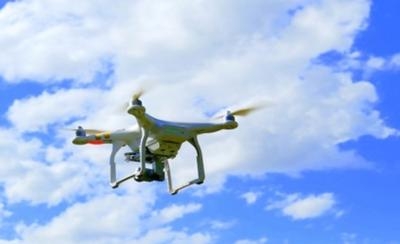Bipartisan Bill Focuses On Jobs, Airports And Infrastructure
Leaders of the House Transportation and Infrastructure Committee on Friday introduced a bipartisan FAA Reauthorization Act of 2018 (H.R. 4), a five-year bill to reauthorize the programs of the FAA, provide long-term stability for the Nation’s aviation community, continue investment in U.S. airports, and make necessary reforms to improve American competitiveness and safety in aviation.

H.R. 4 was introduced in the House Friday by the entire bipartisan leadership of the Committee and its six subcommittees, including Transportation and Infrastructure Committee Chairman Bill Shuster (R-PA), Transportation and Infrastructure Committee Ranking Member Peter DeFazio (D-OR), Aviation Subcommittee Chairman Frank LoBiondo (R-NJ), and Aviation Subcommittee Ranking Member Rick Larsen (D-WA).
The FAA Reauthorization Act:
- Keeps our Nation in the lead in aviation by putting American jobs, American innovation, and the traveling public first.
- Cuts Washington red tape so that our manufacturers can get products to market on time, stay competitive globally, and continue to employ millions of Americans.
- Encourages American innovation in aviation technologies to promote a stronger American workforce.
- Ensures that our airport infrastructure connects our businesses and increasing number of air travelers to the world.
- Gives the American traveling public a better flight experience.
- Ensures our system remains as safe as possible for the American traveler and addresses factors related to recent incidents.
“Our aviation system is essential to our economy and to the American way of life,” said Chairman Shuster. “This bill provides many important reforms that will help U.S. manufacturers and job creators lead in a very competitive global marketplace. This legislation ensures long-term investment and stability in aviation infrastructure for America’s large, small, and rural communities, and it addresses issues to help maintain the safety of our system.”
“I’m glad we finally had the opportunity to come together and introduce a bipartisan, long-term FAA reauthorization bill – a bill that gives the FAA long-term funding it needs to do its job and includes mandates to improve aviation safety, to continue leading the world in aviation research and innovation, and to make needed and targeted reforms to critical aviation programs. This bill will also enhance the air travel experience for the hundreds of millions of U.S. passengers who take to the skies each year,” said Ranking Member DeFazio.
“This FAA authorization is the culmination of years of hearings and listening sessions to solicit input from aviation stakeholders, commercial passengers, general aviation pilots and our colleagues,” said Chairman LoBiondo. “In the truest sense, this legislation represents bipartisan cooperation and compromise to advance the Nation’s aviation interests and safety in the skies. Moving a five-year FAA bill with broad bipartisan support through the Congress and to the President’s desk is my top priority as I wind down my Chairmanship of the Subcommittee.”
“Aviation supports more than 30,000 jobs in Washington state and long-term FAA reauthorization will provide stability and economic growth in the Pacific Northwest,” said Ranking Member Larsen. “With this continued commitment to bipartisanship, the difference between the House and the Senate bills is now merely inches apart. I am pleased Congress can move forward on addressing the long-term infrastructure, workforce and aviation safety needs to benefit communities across the U.S.”
The introduced bill also includes the bipartisan Disaster Recovery Reform Act (DRRA), legislation that received overwhelming support in the House in December as part of an emergency disaster aid package. The DRRA provisions of the bill will help communities better prepare for, respond to, recover from, and mitigate against disasters of all kinds.
The DRRA provides broad reforms to the Federal Emergency Management Agency (FEMA), in particular increasing the federal emphasis on predisaster planning and mitigation to reduce the potential for future loss of life and help reduce the rising costs of disasters.
“The bipartisan DRRA will ensure our communities are more resilient, build better, and build smarter. Ultimately, because of this commonsense, proactive approach to mitigating the impacts of disasters before they strike and not waiting until afterwards to simply pick up the pieces, this legislation will save lives, save property, and save taxpayer dollars,” said Chairman Shuster.

Drone attorney Jonathan Rupprecht has done a deep dive into the reauthorization bill. He notes that the legislation "Tells the Comptroller General of the United States to do a study on appropriate fee mechanisms to recover the costs of “the regulation and safety oversight of unmanned aircraft and unmanned aircraft systems” and “the provision of air navigation services to unmanned aircraft and unmanned aircraft systems.”
Other items of note include a directive for the DOT IG to "conduct a study on 'the regulation and oversight of the low-altitude operations of small unmanned aircraft and small unmanned aircraft systems' and 'appropriate roles and responsibilities of Federal, State, local, and Tribal governments in regulating and overseeing the operations of small unmanned aircraft in airspace 400 feet above ground level and below.'
It also amends Section 336, adding that:
An aircraft cannot be considered a protected model aircraft if it flies over or within 500ft laterally of a facility that operates amusement rides for the general public, unless authorized by the owner of the amusement facility.
Allows for flight instruction or educational flights, even if compensated, to be done in the protected model aircraft category.
There are also expanded definitions for a "Community-Based Organization" as it relates to model aircraft.
(Source: House Transportation Committee news release and Rupprecht Law Blog. Images from file)
 ANN's Daily Aero-Linx (04.15.24)
ANN's Daily Aero-Linx (04.15.24) Classic Aero-TV: 'No Other Options' -- The Israeli Air Force's Danny Shapira
Classic Aero-TV: 'No Other Options' -- The Israeli Air Force's Danny Shapira Aero-News: Quote of the Day (04.15.24)
Aero-News: Quote of the Day (04.15.24) Airborne 04.16.24: RV Update, Affordable Flying Expo, Diamond Lil
Airborne 04.16.24: RV Update, Affordable Flying Expo, Diamond Lil ANN's Daily Aero-Term (04.16.24): Chart Supplement US
ANN's Daily Aero-Term (04.16.24): Chart Supplement US




